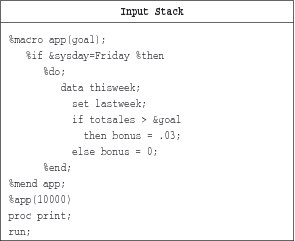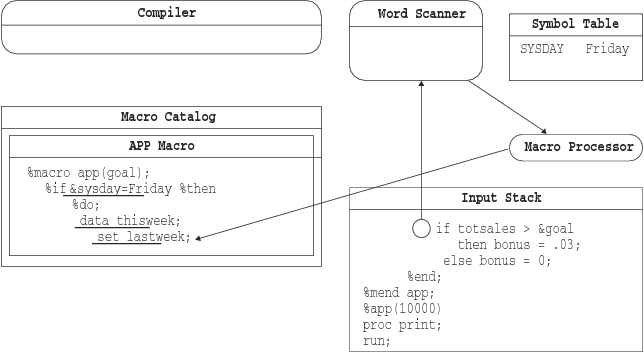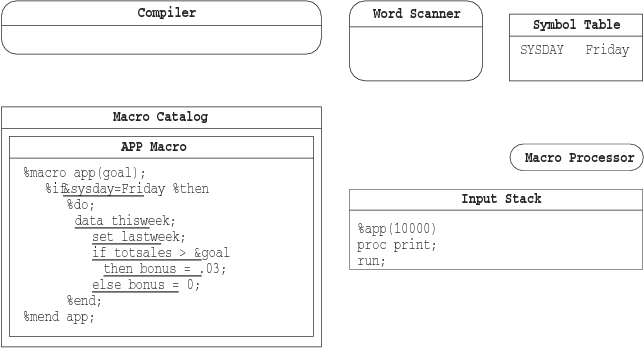How the Macro Processor Compiles a Macro Definition
When you
submit a SAS program, the contents of the program goes to an area
of memory called the input stack. The example program in the following
figure contains a macro definition, a macro call, and a PROC PRINT
step. This section illustrates how the macro definition in the example
program is compiled and stored.
Using the same process
described in SAS Programs and Macro Processing the word scanner begins tokenizing the program. When the
word scanner detects % followed by a nonblank character in the first
token, it triggers the macro processor. The macro processor examines
the token and recognizes the beginning of a macro definition. The
macro processor pulls tokens from the input stack and compiles until
the %MEND statement terminates the macro definition (Macro APP in the Input Stack).
If the macro processor detects a syntax error while
compiling the macro, it checks the syntax in the rest of the macro
and issues messages for any additional errors that it finds. However,
the macro processor does not store the macro for execution. A macro
that the macro processor compiles but does not store is called a dummy macro.
In this example, the
macro definition is compiled and stored successfully. (See the following
figure.) For the sake of illustration, the compiled APP macro looks
like the original macro definition that was in the input stack. The
entry would actually contain compiled macro instructions with constant
text. The constant text in this example is underlined.


